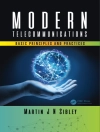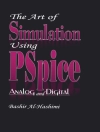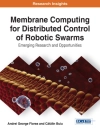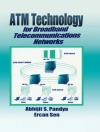Presents the state of the technology and points to future directions for semantic computing
Semantic computing, a rapidly evolving interdisciplinary field, seeks to structure, design, and manipulate computer content to better satisfy the needs and intentions of users and create a more meaningful user experience. This remarkable contributed work examines the art, engineering, technology, and applications of the field. Moreover, it brings together researchers from such disciplines as natural language processing, software engineering, multimedia semantics, semantic Web, signal processing, and pattern recognition in order to provide a single source that presents the state of the technology and points to new breakthroughs on the horizon.
Semantic Computing begins with an introduction that explores the concepts, technology, applications, and future of semantic computing. Next, the book is divided into four parts:
* Part One: Semantic Analysis
* Part Two: Semantic Languages and Integration
* Part Three: Semantic Applications
* Part Four: Semantic Programming and Interface
As readers progress through the book, they, ll learn not only the underlying science, but also the fundamental technological building blocks of semantic computing. Moreover, they, ll discover a variety of cross-disciplinary solutions to current computing and communication problems. Throughout the book, references to the primary literature enable further investigation of each individual topic.
Semantic Computing is ideal for industrial managers, researchers, and engineers seeking to design the next generation of computing systems in order to better meet user needs. It is also recommended as a textbook for senior undergraduate and graduate-level semantic computing courses.
Daftar Isi
Preface.
1 Semantic Computing.
PART I: SEMANTIC ANALYSIS.
2 What Computers Need to Know about Verbs.
3 Content-based Retrieval of Videos.
4 Semantic Approaches for Speech Recognition.
5 Link Analysis in Web Mining.
6 Analysis of Online Blogs and Chats.
7 Speaker Identification and Diarization: State-of-the-art and
Applications.
8 Machine Learning Methods for Ontology Mining.
9 Visual Ontology Development and Large Scale Semantic Concept
Detection.
10 Process Mining and Description.
PART II: SEMANTIC LANGUAGES AND INTEGRATION.
11 Semantic Integration: The Hawkeye Approach.
12 Semantics of Software Modeling.
13 Semantic-Driven Component-Based Automated Code Synthesis.
14 Semantic Web Services.
PART III: SEMANTIC APPLICATIONS.
15 Knowledge Work.
16 Video Search in Visual Semantic Space.
17 Social and Expert Search in Online Communities.
18 Phase-Coherence in Conceptual Spaces for Conversational
Agents.
19 The Role of Semantics in Question Answering.
20 Developing and Using a National Cross-domain Semantic Web
Infrastructure.
21 Semantic Computing Challenges in MM Security.
PART IV: SEMANTIC PROGRAMMING AND INTERFACE.
22 Semantic Languages for Software Engineering.
23 From Semantic Objects to Structured Natural Language.
Tentang Penulis
PHILLIP C.-Y. SHEU, PHD, is Professor at the University of California, Irvine, and a Fellow of the IEEE. Dr. Sheu studies complex biological systems, knowledge-based medicine, semantic software engineering, proactive Web technologies, and large real-time knowledge systems for defense applications. He has authored two books and published more than 100 papers investigating object-relational data and knowledge engineering and their applications and biomedical computations.
HEATHER YU, PHD, is a Senior Scientist at Panasonic Information and Networking Technologies Laboratory.
C. V. RAMAMOORTHY, PHD, is Professor Emeritus of Electrical Engineering and Computer Science at the University of California, Berkeley.
ARVIND K. JOSHI, PHD, is the Henry Salvatori Professor of Computer and Cognitive Science at the University of Pennsylvania.
LOTFI A. ZADEH, PHD, is a Professor of Computer Science at the University of California, Berkeley.












